Spring Along Shoal Creek – April
April 28, 2021 | By Shoal Creek Conservancy
April along Shoal Creek yields a different set of blooming plants, and new leaves in rich shades of spring green fill out the riparian woodlands.
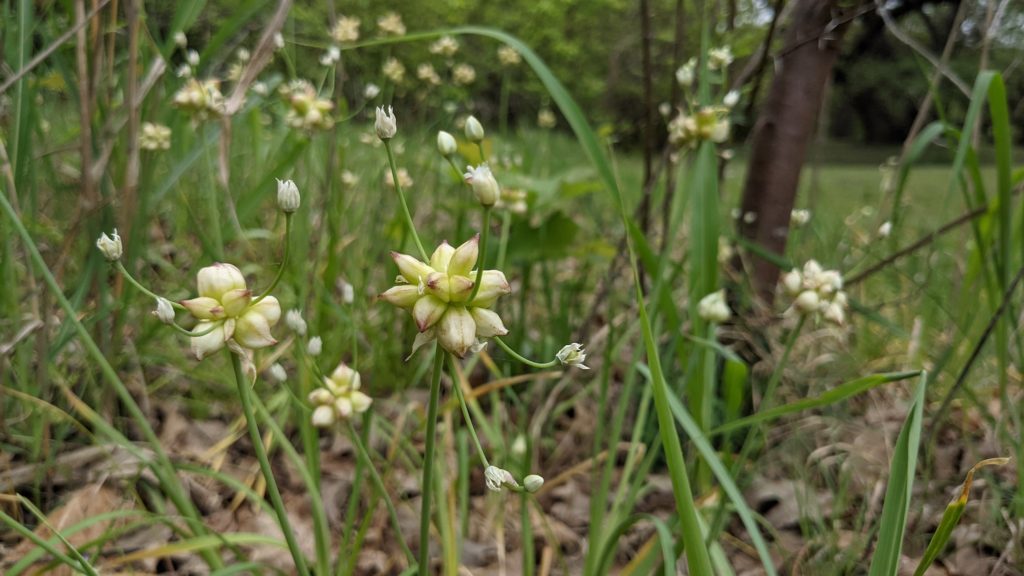
The flowers of Wild Garlic (Allium canadense) can be seen at the edge of woodlands and sometimes close to the water’s edge. The underground bulbs, the leaves, and the bulblets at the top of this plant are all edible. There are a few toxic native plants that look similar, so be sure to check for the distinct onion/garlic scent before collecting this plant for culinary use.
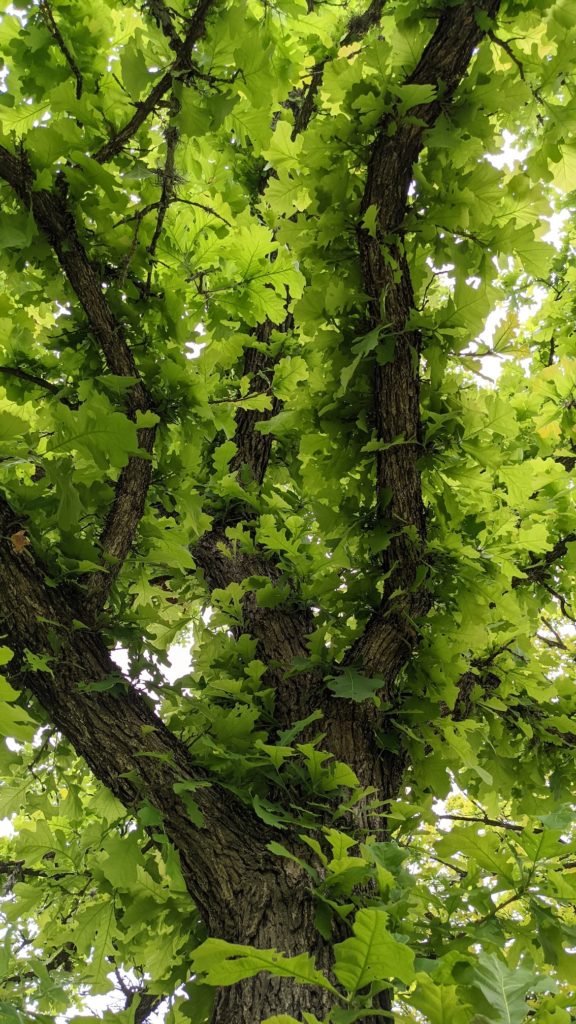
This Bur Oak (Quercus macrocarpa), observed mid-April, is decked out in strikingly bright new foliage. Bur Oak is a huge shade tree that is a larval host plant for multiple butterfly species (Edwards’ Hairstreak and Horace’s Duskywing). Later in the year, it will produce golf-ball-sized acorns (the largest of any North American oak species), which are consumed by birds and mammals, and also make fun quarry for kids on nature walks.
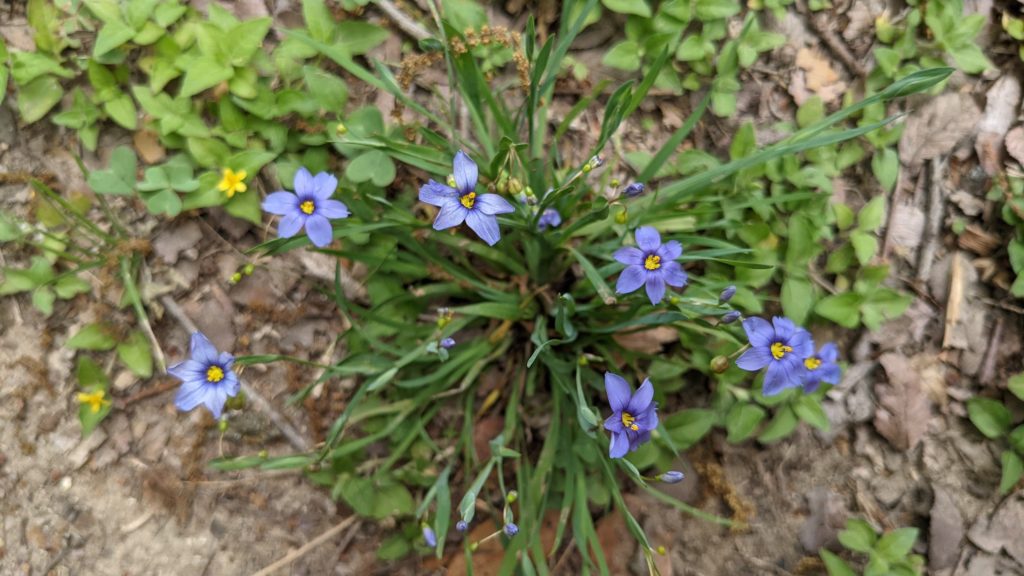
For most of the year, Blue-eyed Grass (Sisyrinchium species) is quite nondescript, but in April it produces these delicate blue flowers. Blue-eyed grass is not actually a grass, but a member of the Iris family. Riparian meadows such as the floodplains along Shoal Creek are a perfect place to see them.
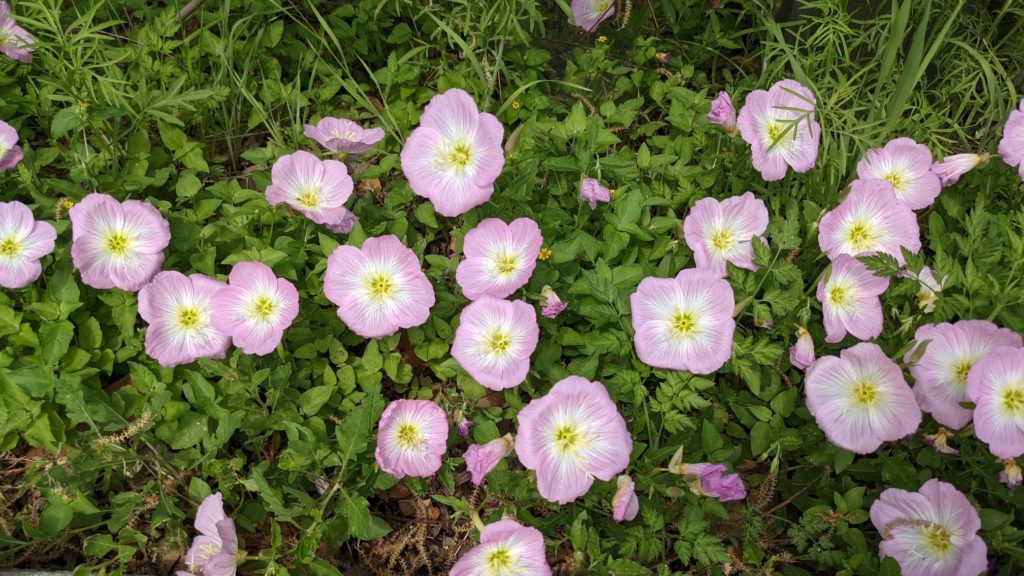
Pink Evening Primrose (Oenothera speciosa) may be a common sight this time of year, but this prolific bloomer deserves a second look. In addition to producing extremely showy blooms throughout April and beyond, it is a very drought and heat-tolerant plant whose nectar is collected by native bees, and whose seeds are consumed by finches.
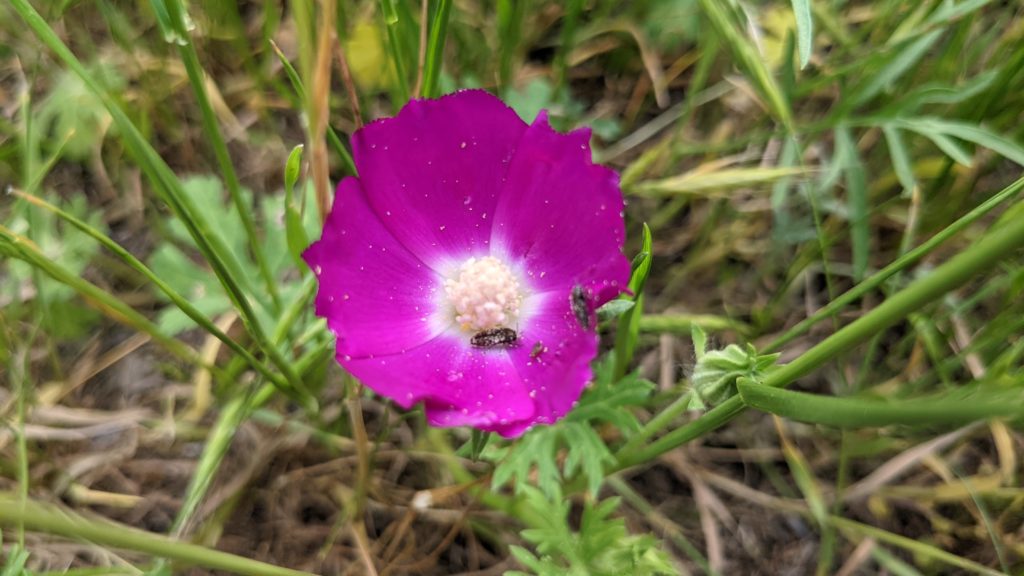
Winecup (Callirhoe involucrata) is a low-growing native perennial that can be seen both in open woodlands and on roadsides near the creek. It has interesting foliage as well as richly colored blooms that attract a variety of pollinators, including bees, butterflies, and beetles, as seen in the picture above!
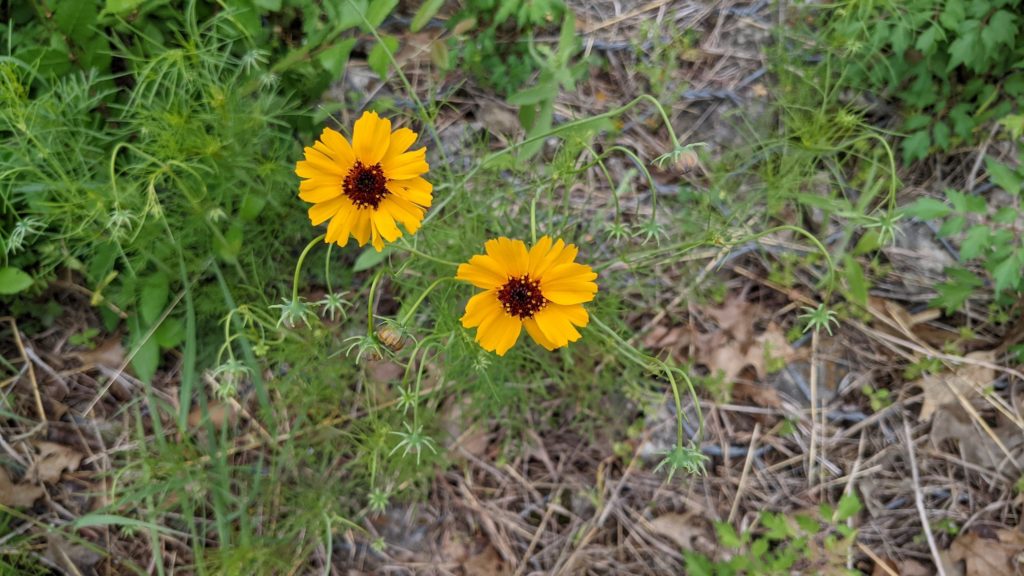
Greenthread (Thelesperma filifolium), named for its delicate thread-like foliage, can be seen blooming on rocky or gravelly hillsides above the creek. This native annual begins blooming in April and continues for a few months. The stalks and leaves can be used to make tea, and several species of butterflies visit for its nectar.
—
Written by Sierra DaSilva, SCC’s Spring 2021 Sustainability Intern
